
by Joy Horn
Who were St Nicolas and St Cuthbert Mayne? Their names have been attached to the parish church
and to the local Catholic primary school respectively, but what do we know about them, and why did people in the past want to commemorate them?
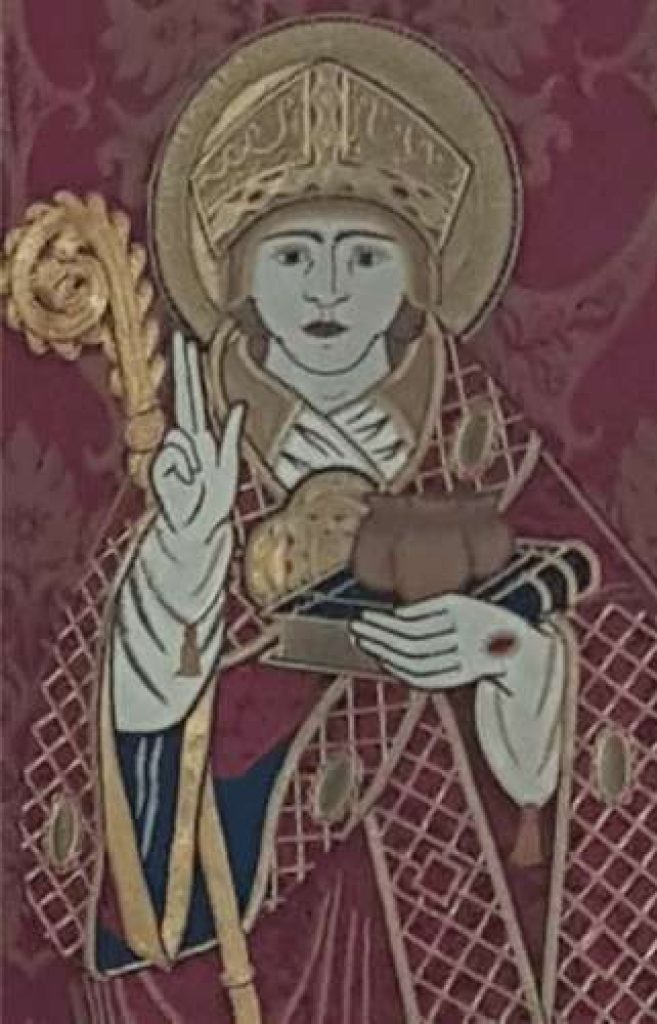
If you come across a church in England associated with St Nicolas (or Nicholas), there is a strong probability that it was founded in Norman times (1066-1154) or by a Norman family soon after. It is likely to be a very old church, even though its building may have been altered or even rebuilt in later centuries.
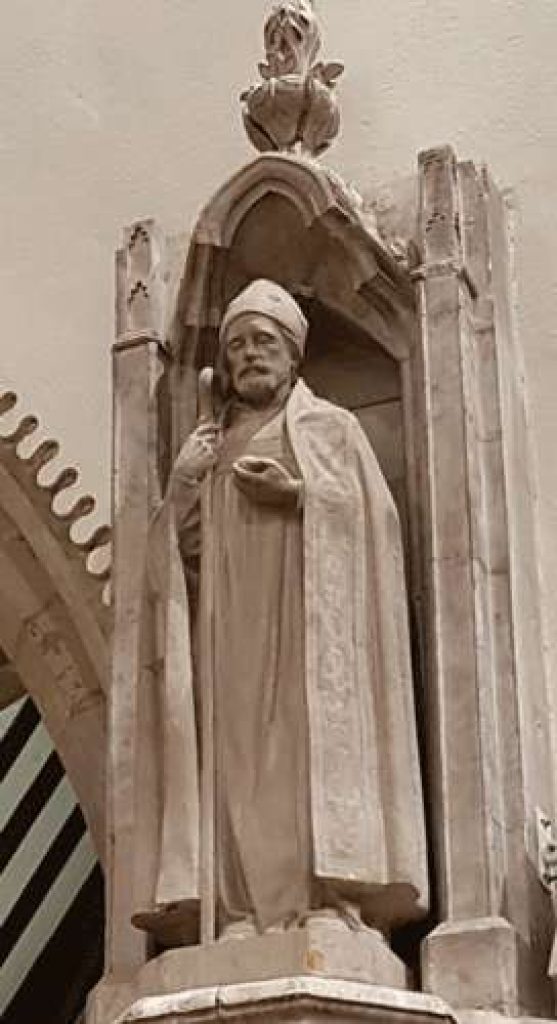
No one knows what St Nicolas looked like, but this hasn’t prevented people producing statues or paintings of what they think he might have resembled. Our parish church has a banner, a painting and a statue of him.
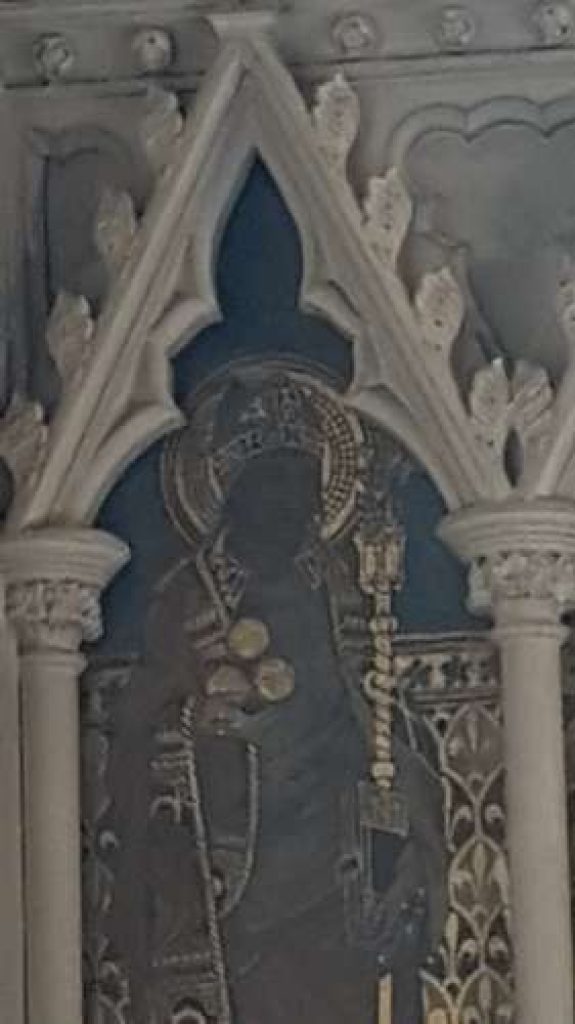
St Nicolas, who died in 345, was bishop of Myra in what is now southern Turkey. He is said to have done good ‘without ostentation and privately’. Various stories are told about him, though it is difficult to sort fact from fiction. He is supposed to have provided bags of gold as dowries for three poor sisters, to prevent them becoming prostitutes. Medieval pawnbrokers adopted him as their patron saint, and displayed three golden balls. Another story has him resuscitating three boys whom an unscrupulous inn-keeper had pickled and served up in a stew. So he is also associated with children. In fact, he developed into Santa Claus! The composer Benjamin Britten used some of these stories in his delightful cantata Saint Nicolas.
After invading Muslims had seized Myra and the shrine of St Nicolas, some Italian merchants captured his remains in a raid in 1087, and took them to Bari in Italy. A new church was built to house the relics, and the veneration of St Nicolas became widespread in western Europe. Soon after, the Normans occupied southern Italy, including Bari, and St Nicolas became popular with them wherever they went. At least 400 churches were dedicated to him in England. It is likely that the Norman families of de Clare or de Warenne at Shere made Nicolas the patron saint of the small church or chapel in the lands they controlled at Cranleigh. The churches at Alfold, Compton, Guildford and Peperharow are also dedicated to him.
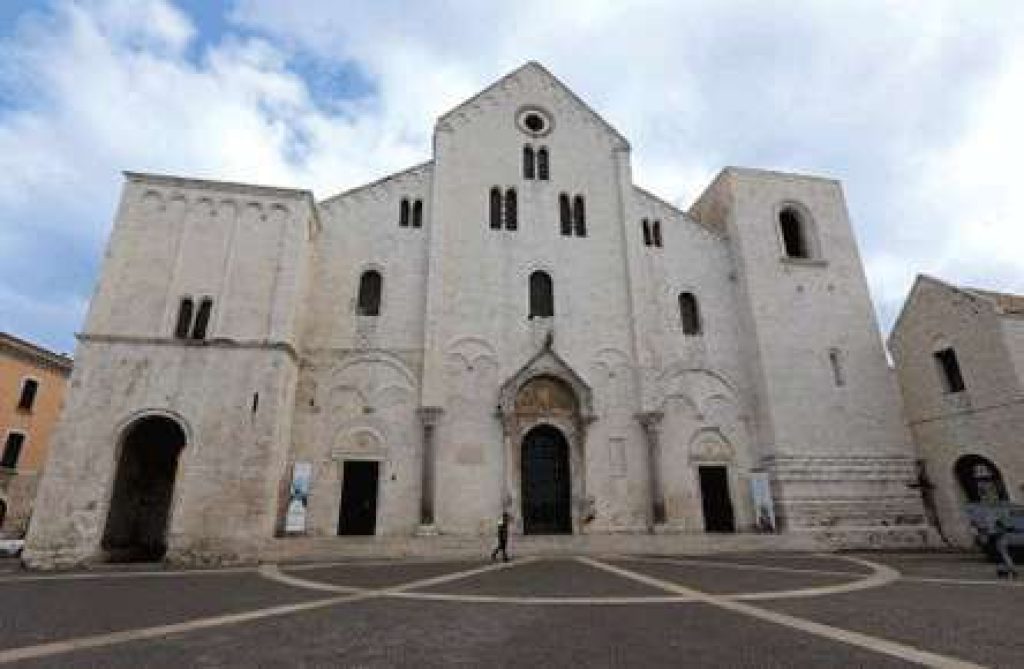
So it seems that we have those Norman conquerors to thank that we have St Nicolas as the patron saint of our parish church.
Fast forward to sixteenth-century England, to Devon in the reign of Queen Elizabeth I. The Church of England had now replaced the medieval Catholic church, due to a combination of politics, nationalism and religious conviction. The monarch had replaced the pope as the head of the church. People who rejected this arrangement were regarded as national traitors.

Cuthbert Mayne grew up as a member of the Church of England, and went first to the grammar school at Barnstaple, and then on to Oxford. There, he met the brilliant young Edmund Campion, who influenced him with his doubts about the Church of England. After some indecision, Cuthbert went to the town of Douai in France, where an English College had been set up, and here he joined the Roman Catholic Church, in 1573. He was ordained as a priest in 1575.

Cuthbert returned to England in 1576, and went to Cornwall. He joined the household of one Francis Tregian at Golden Manor, Probus. He was disguised as a steward, but was actually engaged in ministering to any in the neighbourhood who were dissatisfied with the religious arrangements and hankered after the old days. (They were called ‘recusants’.) This lasted only a few weeks, as on June 8th 1576 Richard Grenville, the high sheriff of Cornwall that year, and 100 armed men arrested him and most of Tregian’s household. Incriminating evidence (a waxen agnus dei) was found on Cuthbert, and he was imprisoned in
Launceston castle.
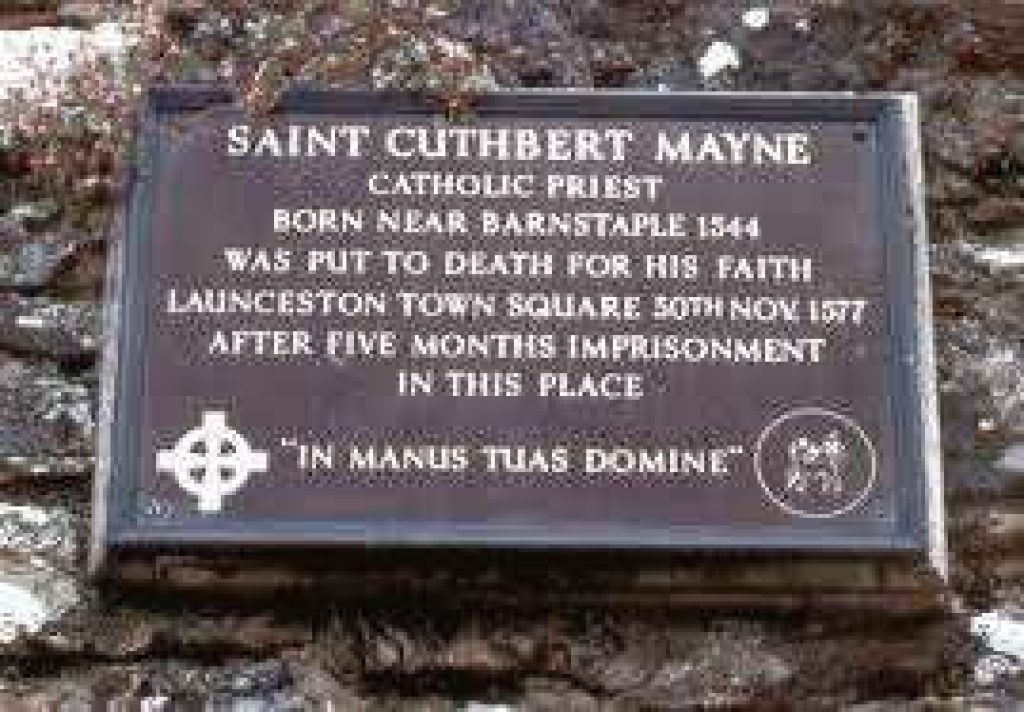
“Into your hands, Lord”
Cuthbert’s trial was scarcely just. The evidence against him was not sufficient and Richard Grenville brought pressure on the jury to bring a verdict of guilty. One of the justices of the peace reported the unjust trial to the Privy Council in London. However, the Privy Council ordered him to be executed, ‘as a terror to the papists’. Cuthbert refused to agree that Queen Elizabeth I was rightly head of the church, and he was executed on November 30th 1577.
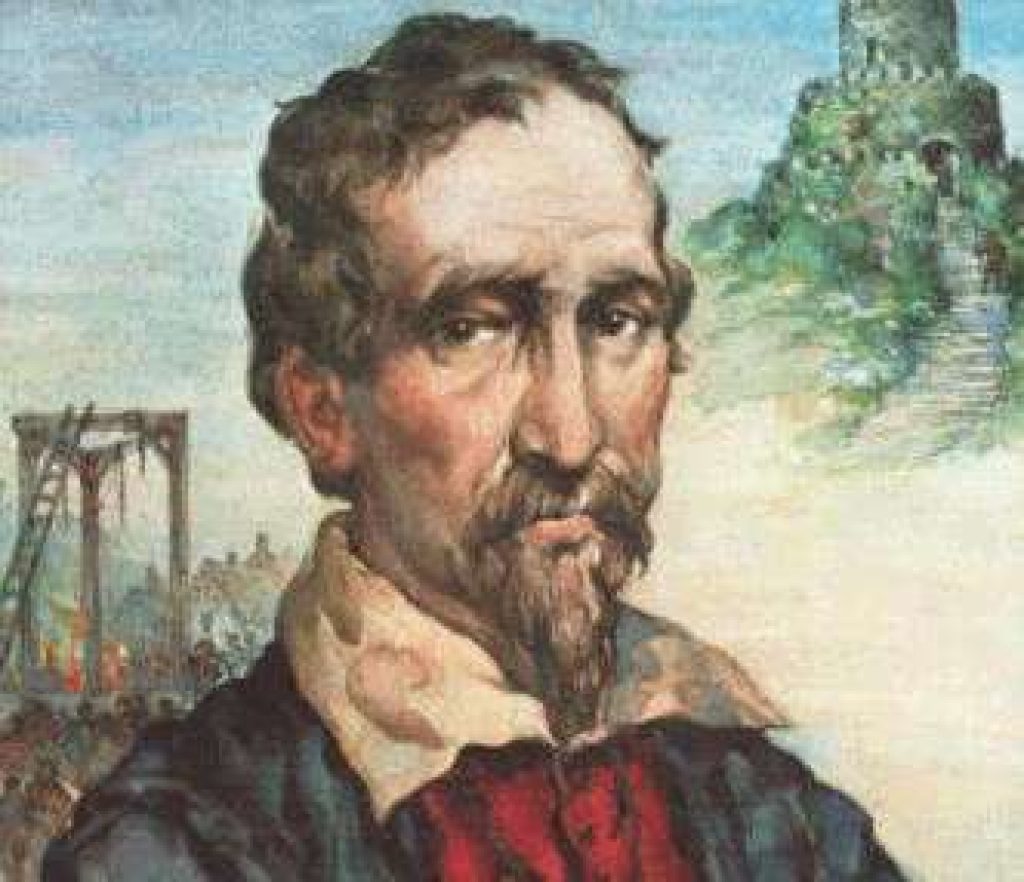
(Launceston Catholic church website)
He was ‘beatified’ by the Pope (given the title of ‘Blessed’) in 1886. Then in 1970 Pope Paul VI declared him a saint, one of a group of 40 English martyrs canonised then.
The Cranleigh Catholic school began in the late 1940s as a very small private school of 5 pupils, meeting in the front room of the Presbytery (or priest’s house) in St Nicolas Avenue. It opened officially in 1955 with 37 pupils, as the ‘Blessed Cuthbert Mayne School’, having decided to adopt Cuthbert Mayne as its patron saint.
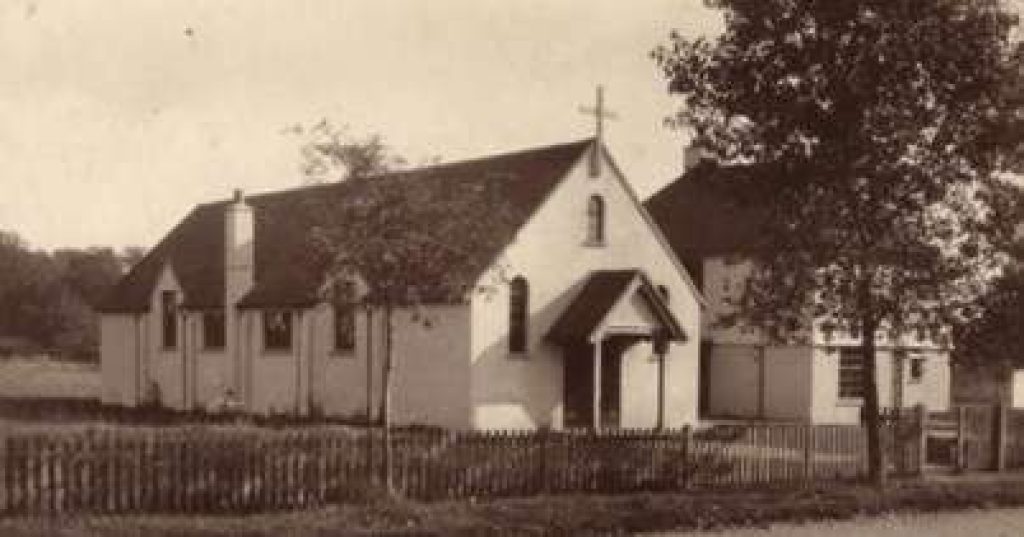
The Presbytery is next door
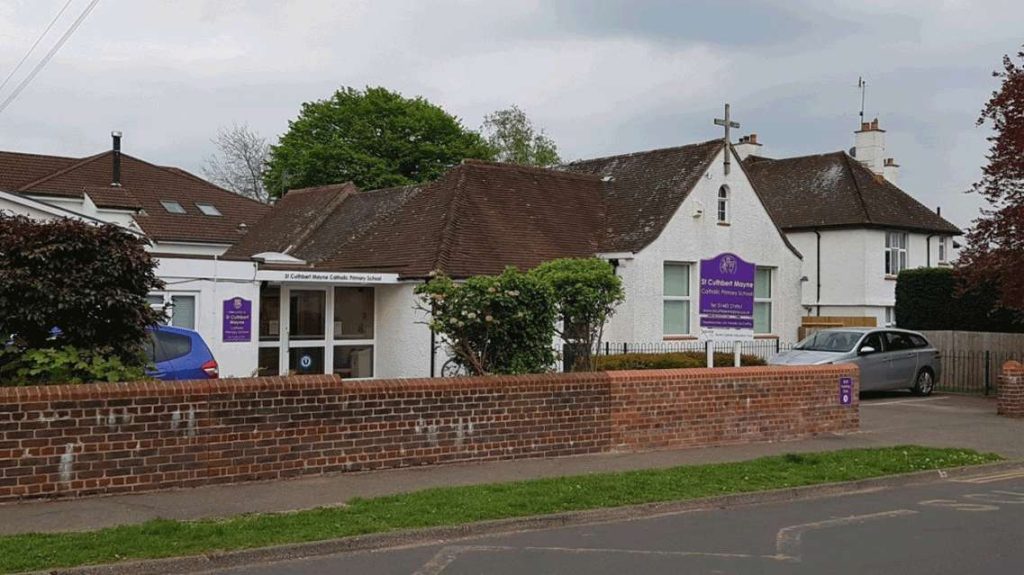
In 1963, the new Catholic Church was opened on the corner with Ewhurst Road, so that the next year the school was able to move out of the Presbytery and take over the former chapel. Additional school buildings were erected. And in 1970, after Cuthbert Mayne had been made a saint, the school changed its name to ‘St Cuthbert Mayne School’.
There are other schools dedicated to St Cuthbert Mayne at Torquay and Hemel Hempstead, and a church at Launceston.
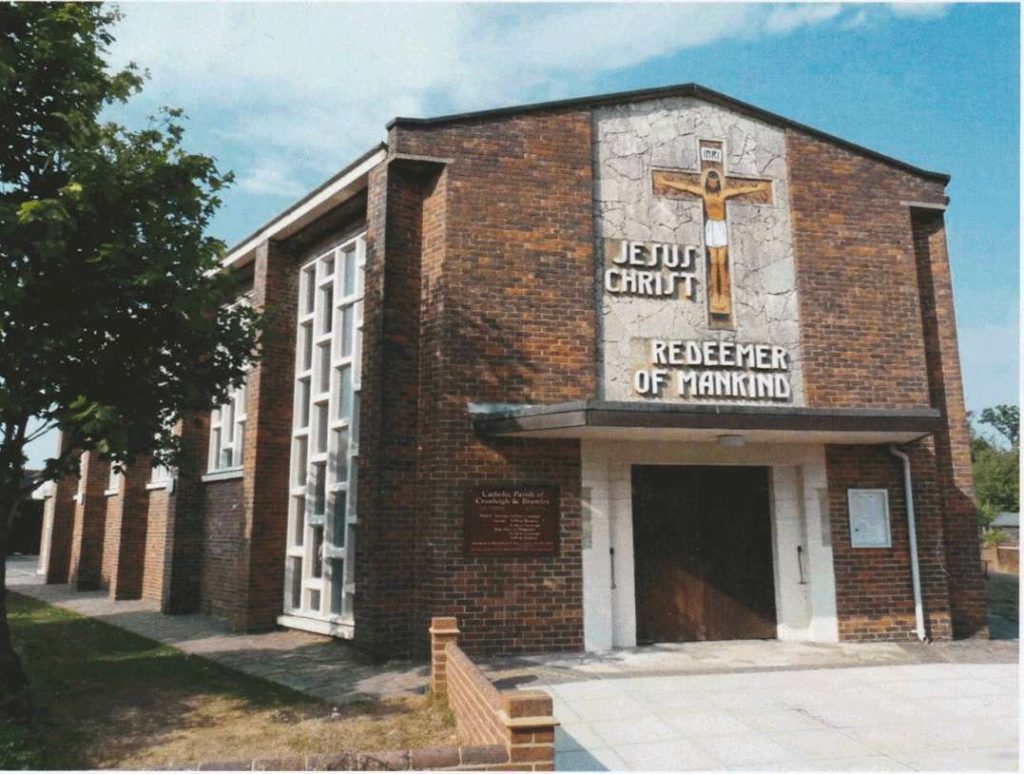
(David Barry, Catholic Church in Cranleigh (2013))
The Cranleigh History Society meets on the second Thursday of each month at 8.00pm in the Band Room. The next meeting will be on Thursday October 13th, when Trevor Brook will speak on ‘Munich and Czech refugees in the Surrey Hills’.











